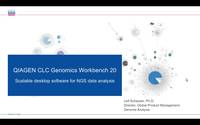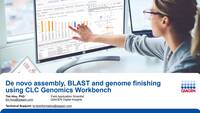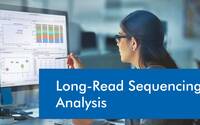QIAGEN CLC Genomics
Single Cell RNA-Seq, Cell Hashing, and Spatial Transcriptomics
400 views
Using CLC Genomics Workbench, you will learn how to perform secondary analysis on your single cell RNA-seq data. Specifically, you will learn how to:
• Import your raw FASTQ or processed cell-matrix files.
• Use pre-configured but customizable pipelines/workflows for single cell RNA-seq data.
• Generate high resolution visuals and other files from your analysis for publications and biopharmaceutical discoveries.
o Dimension reduction (UMAP, t-SNE) plots
o Differential expression table for clusters, cell types, or combination of both
o Heat map
o Dot plots
o Violin plots
• Learn how to use “Create Cell Annotations from Hashtags” for cell hashing (i.e., CITE-seq).
• Dive into spatial transcriptomic analysis, the latest feature in the single cell RNA-seq module.
Related videos
QIAGEN CLC Genomics
QIAGEN CLC Genomics Workbench 20 – scalable desktop software for NGS data analysis
In this webinar, Leif Schauser, Ph.D., Director Product Management Genome...
QIAGEN CLC Genomics
De novo assembly, BLAST and genome finishing using QIAGEN CLC Genomics Workbench
This webinar will introduce users to the tools available for short reads...
QIAGEN CLC Genomics
16S/18S/ITS sequencing analysis using CLC Genomics Workbench
QIAGEN CLC Microbial Genomics Module provides tools and workflows for a broad...
QIAGEN CLC Genomics
Long-read sequencing analysis in the QIAGEN CLC Genomics Workbench
This tutorial is an introduction to working with the tools in the Long Read...



